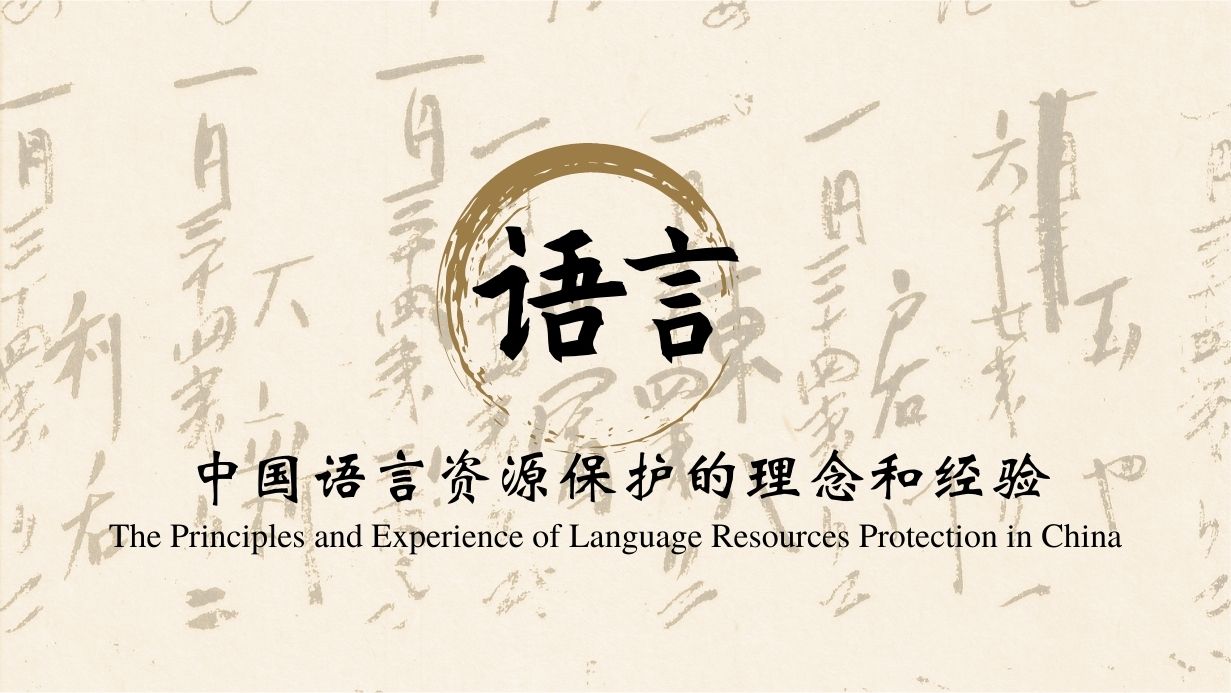The Principles and Experience of Language Resources Protection in China
中国语言资源保护的理念和经验

Course Syllabus 课程章节
1China is one of the richest countries in the world in terms of linguistic resources, but under the rapid process of urbanization, excellent traditional language and culture are at risk of extinction in the form of "intergenerational replacement". “Diversity" and "endangerment" constitute the two significant characteristics of China's language resources at present. Guangxi has rich deposits in languages. There are not only six major Chinese dialects, including Southwest Mandarin, Cantonese dialect, Ping and Tu dialects, Hakka dialect, Xiang dialect and Min dialect, but also Zhuang, Dong, Shui, Maonan, Mulao, Laga, Cha Dong, Gelao, Miao, Bunu, Ba Hum, Jong Nai, Uno, Yao (Mien), Yi, etc., which belong to different language families of Dong-Tai, Miao-Yao and Tibetan-Burmese in the Sino-Tibetan language family. In addition to the minority languages, there are also the Jing and Le languages of the South Asian language family. Among them, Jing, Zhuang, Miao, Yao (Mien), Yi and Gelao languages also have a certain number of speakers in ASEAN countries. Since 2004, the China-ASEAN Expo has been held in Nanning, Guangxi, and it has carried out exchange activities in multiple fields and levels centered on exhibitions, building an excellent platform for the exchange and mutual appreciation of ASEAN languages and cultures. Since 2015, China's Ministry of Education and National Language Commission have launched the "Chinese Language Resources Protection Project", which has built the world's largest language resource database to date and scientifically protected all Chinese dialects and 123 minority languages, including all of Guangxi's language resources. Under the leadership of the project, three major Chinese language preservation experiences have been formed: multilingualism, use for preservation, and sharing. At present and in the future to come, we should not only actively carry out cross-disciplinary research to protect and develop language resources, but also strive to enhance the dissemination and influence of Chinese language and culture, so as to provide experience and reference for the protection of language resources in other countries around the world.
中国是世界上语言资源最丰富的国家之一,在城镇化的快速进程下,传统优秀语言文化面临着“代际替换式”的消亡风险,“多样性”和“濒危性”构成了当前中国语言资源的两大显著特点。广西是一个语言富矿,既拥有西南官话、粤方言、平话和土话、客家话、湘方言、闽方言等六大汉语方言,还拥有分属汉藏语系侗台、苗瑶、藏缅不同语系的壮语、侗语、水语、毛南语、仫佬语、拉珈语、茶洞语、仡佬语、苗语、布努语、巴哼语、炯奈语、优诺语、瑶语(勉语)、彝语等少数民族语言,此外还有南亚语系的京语和徕语。其中,京语、壮语、苗语、瑶语(勉语)、彝语、仡佬语等在东盟国家也有一定数量的使用人口。自2004年以来,中国-东盟博览会长期在广西南宁举办,它以展览为中心,开展了多领域多层次的交流活动,为东盟语言文化的交流互鉴搭建了优秀的平台。
自2015年以来,中国教育部、国家语委启动实施“中国语言资源保护工程”,建成了迄今为止世界上规模最大的语言资源库,对包括广西全部语言资源在内的全国汉语方言以及123种少数民族语言开展了科学保护。在语保工程的引领下,形成了三大中国语保经验:多语分用、以用促保、共享共用。在当前和未来的一段时间里,既要积极开展交叉学科研究,保护开发语言资源;也要努力增强中华语言文化的传播力和影响力,以为世界其他国家的语言资源保护提供经验和借鉴。





